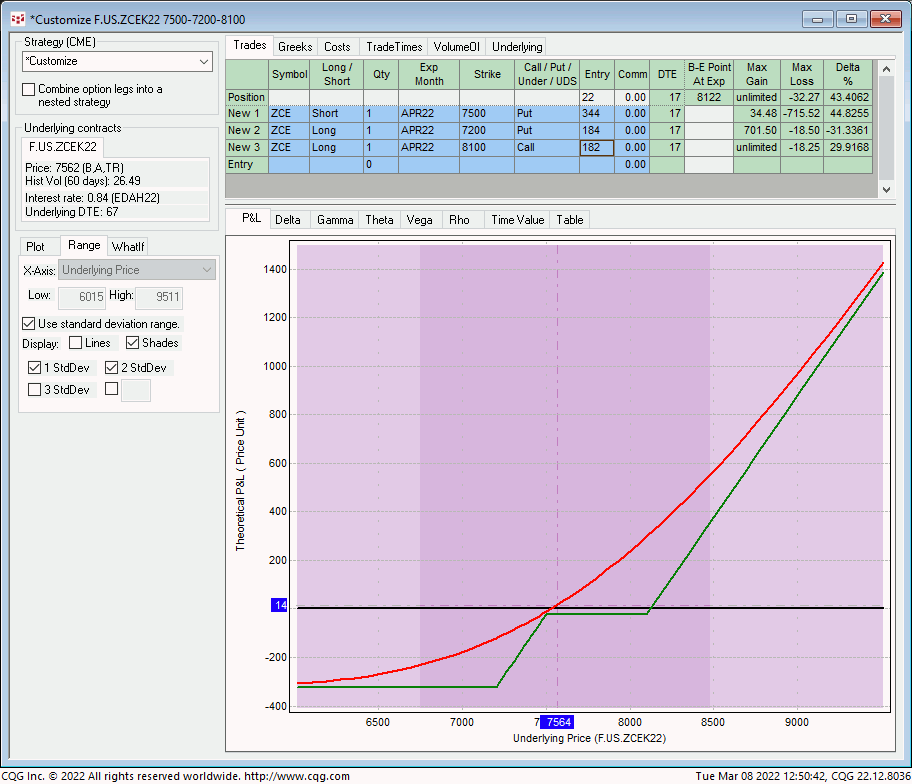
Against the backdrop of the raging bull market, the past couple days’ relatively piddly 54-cent setback this week is considered another minor corrective hiccup within the still-developing and arguably-still-accelerating bull market. In Thur’s Technical Webcast following that day’s resumed bull, we cited 02-Mar’s 7.14 low as the latest smaller-degree corrective low and new short-term risk parameter this market is required to fail below to confirm a bearish divergence in short-term momentum and even defer, let alone threaten the major bull. In lieu of such weakness, this week’s setback is considered another corrective/consolidative event consistent with our longer-term bullish count ahead of another round of new highs above Fri’s 7.83 high.
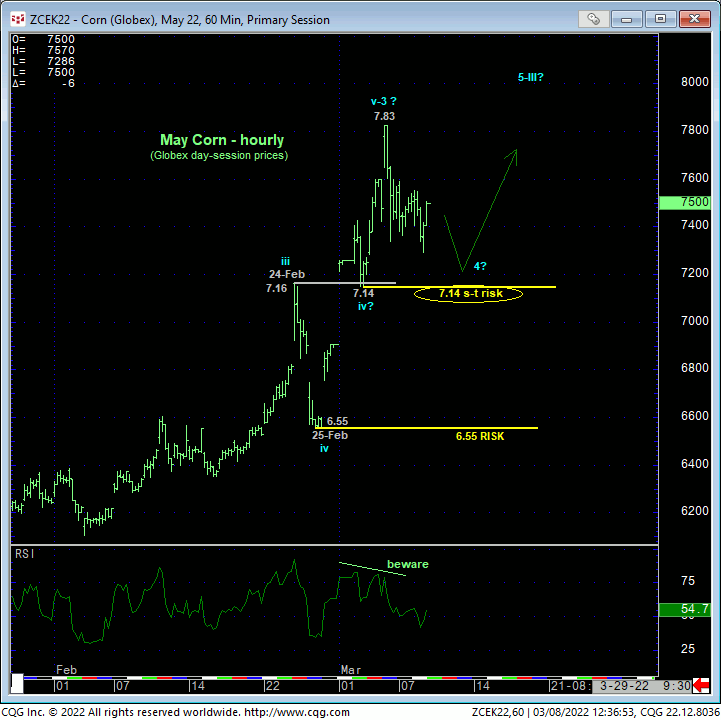
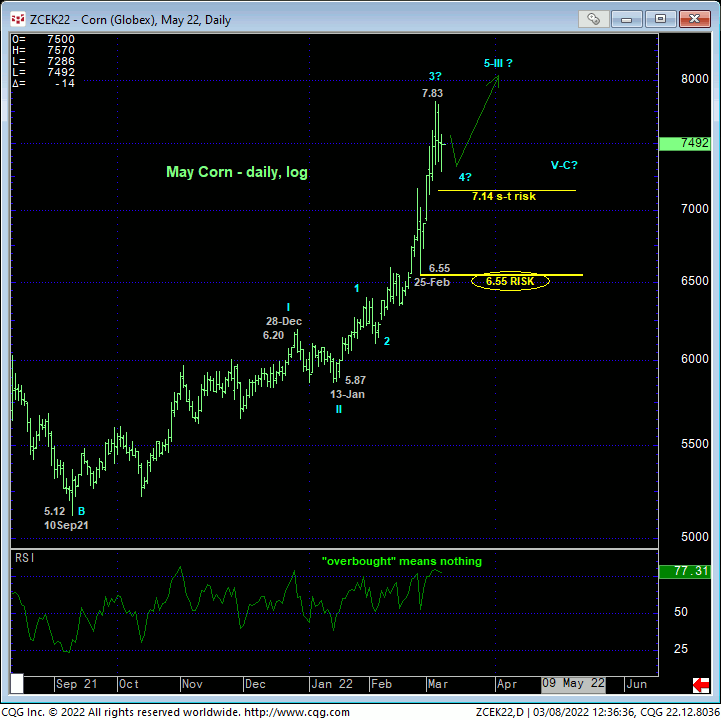
Indeed, only a glance at the daily (above) and weekly (below) log scale charts is needed to see that the secular bull trend remains well entrenched, but also that it has been ACCELERATING since mid-Feb. The accelerated nature of this rally is characteristic of the strongest 3rd-wave portion of an eventual 5-wave Elliott sequence. This suggests that following the end of the suspected 3rd-Wave portion of the bull from 13-Jan’s 5.87 low, a 4th-Wave correction/consolidation would ensue and that would be followed by a 5th-Wave resumption of the bull to another round of new highs thereafter. The bottom line is that this market has yet to provide any evidence to suggest it is anywhere near an ultimate and inevitable top. Given the magnitude of this clear and present and major bull trend, we believe commensurately larger-degree weakness below at least 25-Feb’s 6.55 larger-degree corrective low is warranted. This 6.55 level remains intact as our key long-term bull risk parameter pertinent to longer-term commercial players.
Against this strong backdrop, it also stands to reason that until and unless this market confirms a bearish divergence in even short-term momentum, there remains no objective technical reason for producers to establish bear hedges. The forces behind this mega-bull are unlikely to dissipate quickly, but rather take time. During this time, whenever it is, the market is likely to and will be required to satisfy our three key reversal requirements of:
- a confirmed bearish divergence in momentum of a scale sufficient to threaten the secular bull trend
- proof of trendy, impulsive 5-wave behavior down in the initial counter-trend break, and, most importantly,
- proof of 3-wave corrective behavior on a subsequent recovery attempt that stalls out at a level south of the rejected high.
The market has yet to satisfy the first of these requirements on even a short-term, intra-day basis.
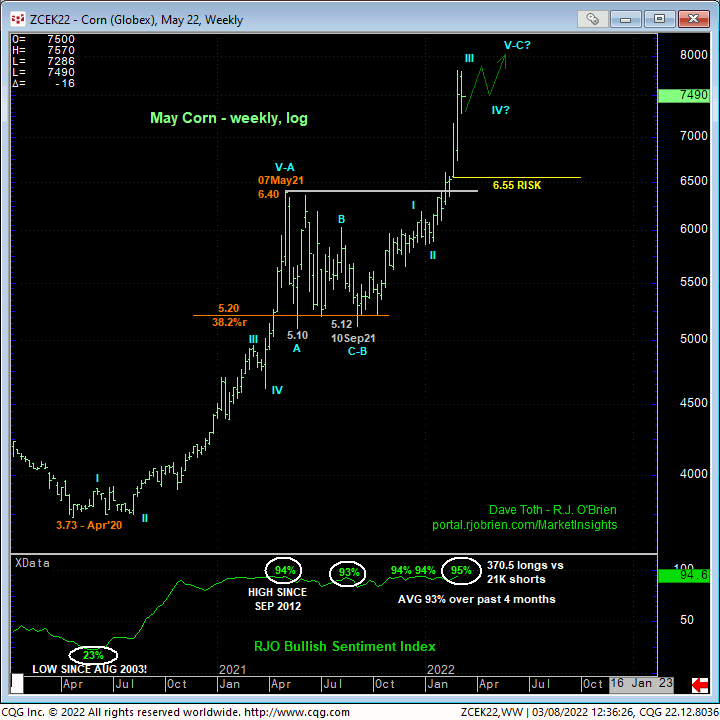
Everyone is likely aware of the understandably historically extreme bullish sentiment levels that are typical of major PEAK/reversal environments. But as always, sentiment/contrary opinion is not an applicable technical tool in the absence of an accompanying confirmed bearish divergence in momentum. Indeed, our RJO Bullish Sentiment Index of the hot Managed Money positions reportable to the CFTC has AVERAGED 93% over the past FOUR MONTHS while this market has rallied from 5.90-area prices to Fri’s 7.83 high. Just like in 2012, these extraordinary sentiment levels will absolutely contribute to another eventual peak/reversal for the ages, but the market has yet to provide the preliminary setup to suggest such a high is anywhere near at this juncture.
These issues considered, a full and aggressive bullish policy and exposure remain advised with a failure below 7.14 required for shorter-term traders to neutralize exposure to circumvent the depths unknown of a correction or possible reversal lower. Commensurately larger-degree weakness below 6.55 remains required for longer-term commercial players to follow suit. In lieu of such weakness, we anticipate a continuation of the secular bull trend to levels indeterminately higher, including a run at or even break of 2012’s 8.49 all-time high. This overall technical construct goes against the need for producers to hedge downside risk and reinforces the call for end-users to maintain and/or add to bull hedges. This market has yet to mitigate previously advised bull hedges that should still be in place. But for end-users who are considering additional bullish protection heading into tomorrow’s crop report, we discuss such a strategy below.
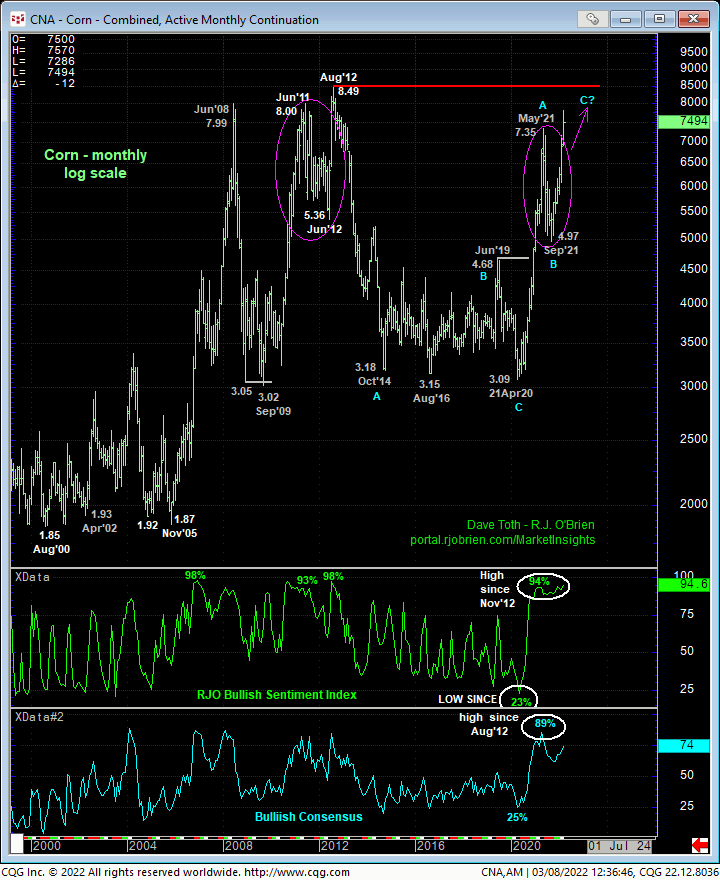
END-USER BULL HEDGE: SHORT APR 7.50 – 7.20 PUT SPREAD / LONG APR 8.10 CALL COMBO
Structured against recent short-term support around the 7.30-area, this strategy involves selling the Apr 7.50 – 7.20-put spread for around 16-cents and buying the Apr 8.10 calls around 18-1/4-cents for a net cost of 2-1/4-cents. This strategy provides:
- a current net delta of +43%
- favorable margins
- fixed maximum risk/cost of 2-1/4-cents if the underlying may contract settles anywhere between 7.50 and 8.10 at expiration 22 days from now on 25-Mar
- fixed, maximum risk/cost of 32-1/4-cents on ANY decline below 7.20
- unlimited, dollar-for-dollar upside hedge protection above its 8.12 breakeven point at expiration.
Please contact your RJO representative for an updated bid/offer quote on this strategy and good luck on tomorrow’s numbers.
